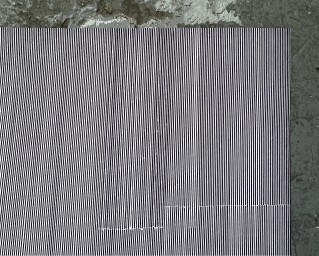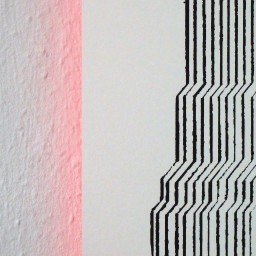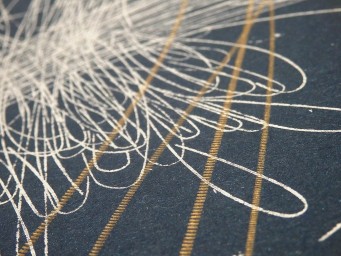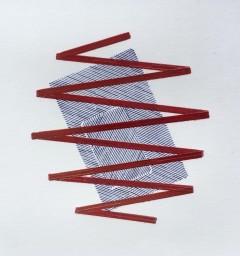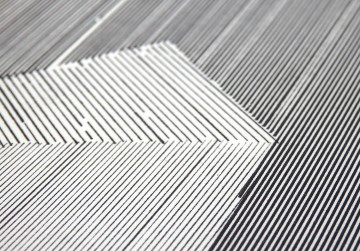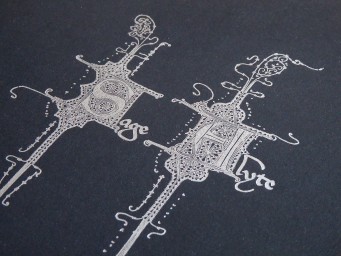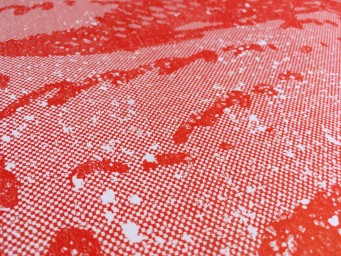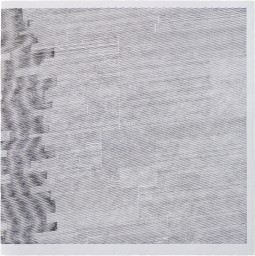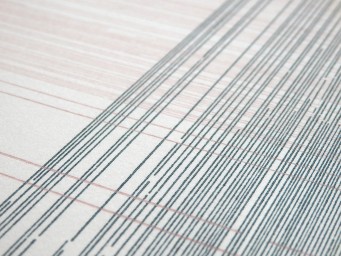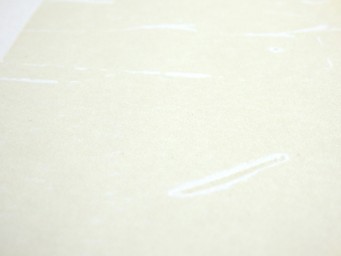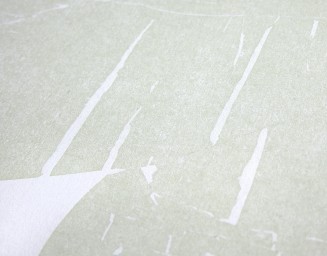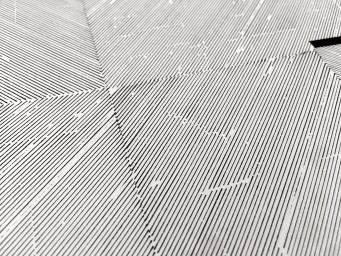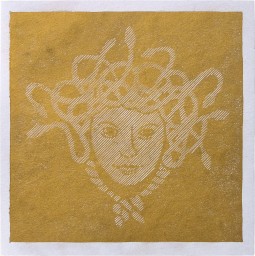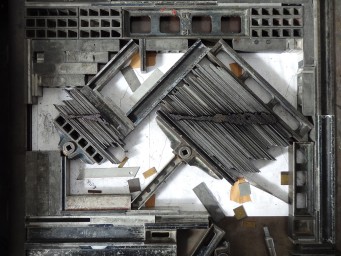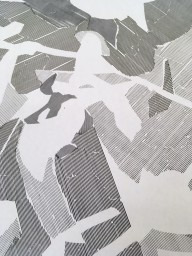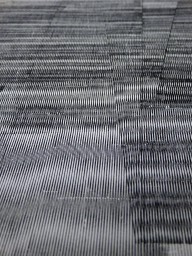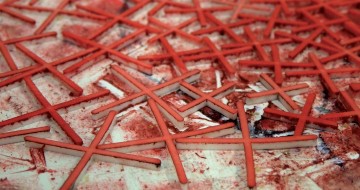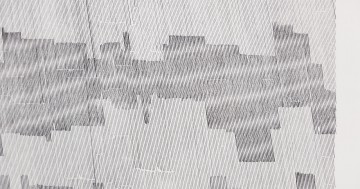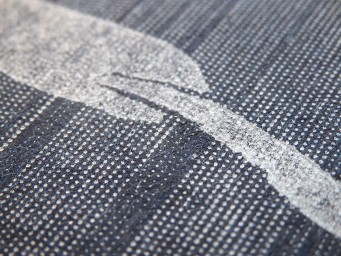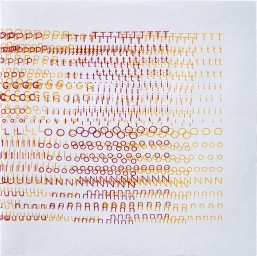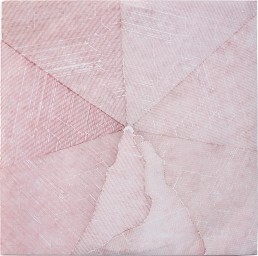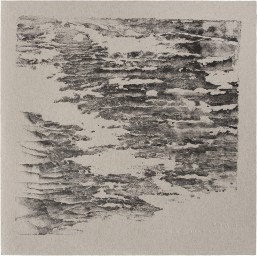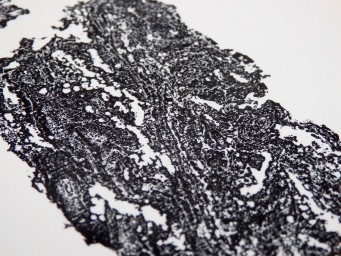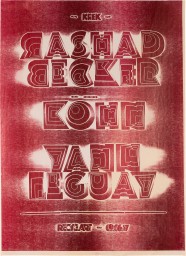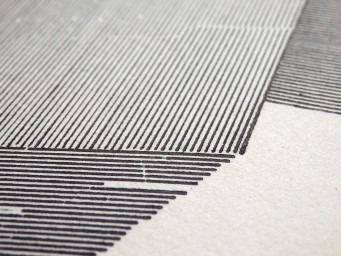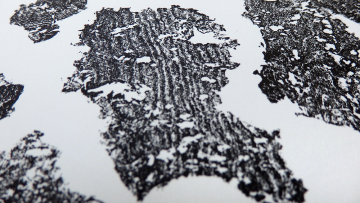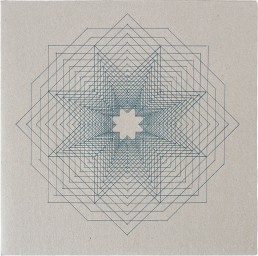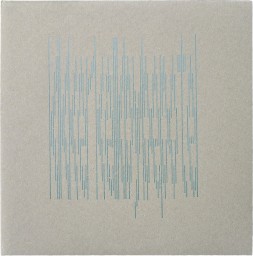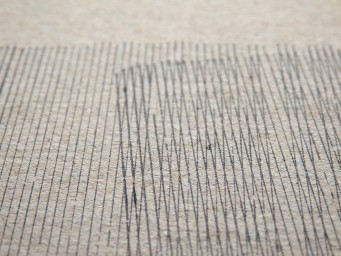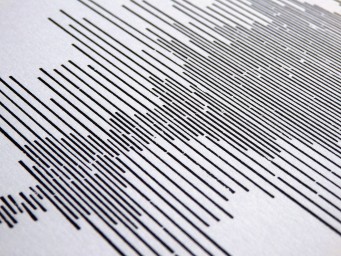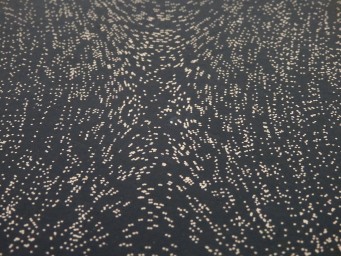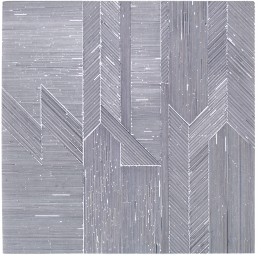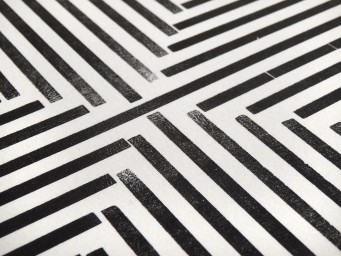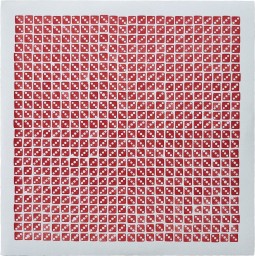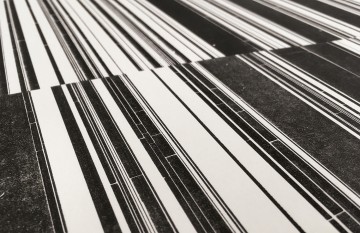Hey Dimitri ( that’s me, David 😬… )*
How’s it going – what have you been working on lately?
To be honest, I haven’t been working on much lately… I mostly had to fix my press (an Asbern Piccolo from ’68). The worm & crescent were totally wasted and it took me months to do it, but I did manage to print a poster for Lawrence Le Doux’s LP (HOST) using the same technique for the sleeve, which used specially cut 2mm thick glass that spelled out the word HOST glued to a wood panel which was then printed from without too much pressure to break it. From this project I learned how to fuck your rubber rollers up, they are now full of little pieces of glass. I also tried to print bigger than the actual size you can with the press (just a few cm), but I failed.
Whilst the press was out of order, I had time to fantasize about another project I had in mind… I wanted to print loose ball bearings…. Yes, loose ball bearings…. If you put a lot of them on a flat surface they give you a nice random pattern (repetition & accumulation have always been common in art), so when I’d finished the HOST poster, I bought 12000 6mm ball bearings. I then took a wood panel of 52 × 72cm, put double sided tape on it and somehow managed to glue 12,000 balls onto it. The pattern was great… a 100% random full surface full of little metal balls. I was SUPER EXCITED. So I put it on the press, brought it up to height, inked and printed it and ‘TADA…!’ HUGE DISAPPOINTMENT :( The white space between the black dots was way too big, and it looks totally un-interesting…. It would’ve been a nice wallpaper…for IKEA… So next thing to do is try with smaller balls, I already did some tests with 3mm ones and the results might be more interesting with a better balance between black & white.
Tell me about Vlek and your involvement with it.
We started Vlek 9 years ago with Julien and Thomas. It’s a music label where we produce mostly Belgian “outsider” electronic music. I started to learn letterpress almost at the same time we started the label. The 2 first releases I silkscreen printed the sleeves but then for the 3rd release, I thought I could do it letterpress and since then I haven’t stopped.
(note: I’m no longer working at vlek… I might launch a new project anytime soon).
You’ve come at letterpress from a really interesting angle – using found materials in an ad-hoc manner and brass rules in the most head-scratching way I’ve ever seen – how challenging has this been?
Well, I think that learning letterpress at an Art school for adults was the main reason why I use it in a more abstract form. The first year at the academy was kind of horrible. Looking at everybody working on their personal project (the RHoK academy in Brussels might be the best place to do etching and lithography in Belgium, maybe in Europe) and me, having no goal except the fact that I wanted to learn that technique, was not cool at all. I just knew that putting letters on the press’s bed to write a text wasn’t something interesting (in that case), I was in an Art school, I was not there to redo a newspaper page. So, the teacher gave me some exercises to try and pull something out of me. And I still remember that moment, at the end of the year, when I opened this tray full of brass rules, my eyes blinked and somewhere between my ears, a little light switched “on” and I thought “Ok, I can pull something out of it”.
Since then, I just play with it.
About the found material, it comes from the first Lawrence Le Doux’s record we put out. He came to me and said: “Ok, I gonna call it Terrestre e.p. I would like the cover to recall something like stone or something…” . Me: “huuuuuu… stones… ok……”. Then we went and bought a slice of stone. It was just flat…, there is no texture at all. We didn’t even try to print it. We went to see a woman who works with stones and explained what we wanted to do, the texture we were looking for and at the end of the chat, she said “but, why don’t you try with something like cork?” And voilà. Now, with Lawrence, it’s like a little game we have, to find out new material to print out. I like it. It’s challenging, a bit frightening, ‘cause you have to find a solution.
I’m also doing it because I have a press, quite a lot of brass rules but only 4 trays of lead types. So I need to print something else than lead.
What limitations do you find when working on your projects.
When it’s for a sleeve, I might say the amount of colours or the print run. The maximum I did was 10 (for Aymeric De Tapol’s Les Horizons). It took me 15 days to print the 3000 print run + setting up the brass rules. Way too much, even if I’m really proud of this sleeve.
When it’s a print for myself, and it’s a small run on a nice paper, I don’t have limitations (or I haven’t find them yet).
Haha, I was invited at the great LetterpressWorkers in Milano last June. While I was working on something, Marieke, from Monotypes, asked me about it and told me “Well, it seems that you don’t like simple projects”.
I like to go out of my comfort zone, it pushes you to get new ideas. And sometimes it’s cool, with a great print but sometimes you fail. Like for this ball bearing project, I was stupid enough to start with 12k balls, not 200.
I need to be excited by the project. When I draw a sketch and put it on the press bed, if I look at it, doubt more than once and think about the time consuming it’s gonna be, I don’t do it. It has to be a pleasure, even if my back hurts and I’m tired of cleaning up and sorting brass rules, it has to be fun in a way. That way is to be excited by the project. Like for the print I did with the little ornaments going from “order to chaos”. It took me more than 50 hours of labor to get 5 good prints at the end. But I was excited by it till the end (ok I had some moments of doubt, but it was too late to stop)
Tell us about the piece you’ve made for Double Dagger
Well, I provided two prints. They are both experiments with loose ball bearings. But this time I bought 1/8” balls… a bag of 20k balls. The balance between black and white is much better than with 6mm ø balls.
I didn’t have a clear idea on what to do with so I made the first one, playing with the moiré effect… different orientations of balls overlapping each other.
It was a lot of work to get the balls aligned. It might not be difficult with 200 and a 1cm ø but with 12k, for insance, and with less than 1gr / ball… it’s not so easy. But the biggest challenge was to not lose too many. I didn’t fail but I didn’t win either. I’m sure I’ll find some hidden somewhere in a years time. Hopefully there isn’t one stuck in the press waiting to break it. It would have been ‘funny’ in a way…
Luckily, nothing happened (yet).
Thanks to Nick – The Print Project for letting me use this interview, who was published in Double Dagger – Issue 3 (answered in July 2018).
*I used to be Dimitri Runkkari, now I’m Dave. Wahey!
Exhibitions.
Solo.
2020 The visual sound of Vlek – Le Delta • Namur, BE
2019 INCUNABULA – Print Gallery • Tokyo, JP
2015 Rooftop Party – Renolds • Brussels, BE
Group.
2024 GRAPHICE – Buronzu gallery • Liège, BE
2023 Prix de la Gravure et de l’Image imprimée • La Louvière, BE
2023 Project T – Het Veem • Amsterdam, NL
2021 Prix de la Gravure et de l’Image imprimée • La Louvière, BE
2020 From Futura to the Future – Museum für Druckkunst • Leipzig, DE
2019 New Impressions – Hamilton Woodtype Museum • Two Rivers, USA
2018 Eat Lead – Atom Gallery • London, UK
2016 Ukiyo-e exhibition – Cinqentenaire Museum • Brussels, BE
2015 ADE – Melkweg • Amsterdam, NL
2010 > 2017 RHoK Academy – End of the year’s exhibition • Brussels, BE
Publications.
2019 Double Daggers • itw
2018 Pressing Matters • itw
2016 Belgium - The vinyl Frontier • review
2015 Vinyl - The art of making records by Mike Evans on Aurum Press • review
2014 Collector’s Edition – Innovative Packaging and Graphics by Stuart Tolley on Thames & Hudson • review
2013 Computer Arts • itw
Get in touch.
hello@davidm.ink
Credits.
Font_ PicNic by Marielle Nils
Font_ NotCourierSans by Ludivine Loiseau and OSP
Website_ Wetnet
Camera_ thx OST
Pictures_ me^^
